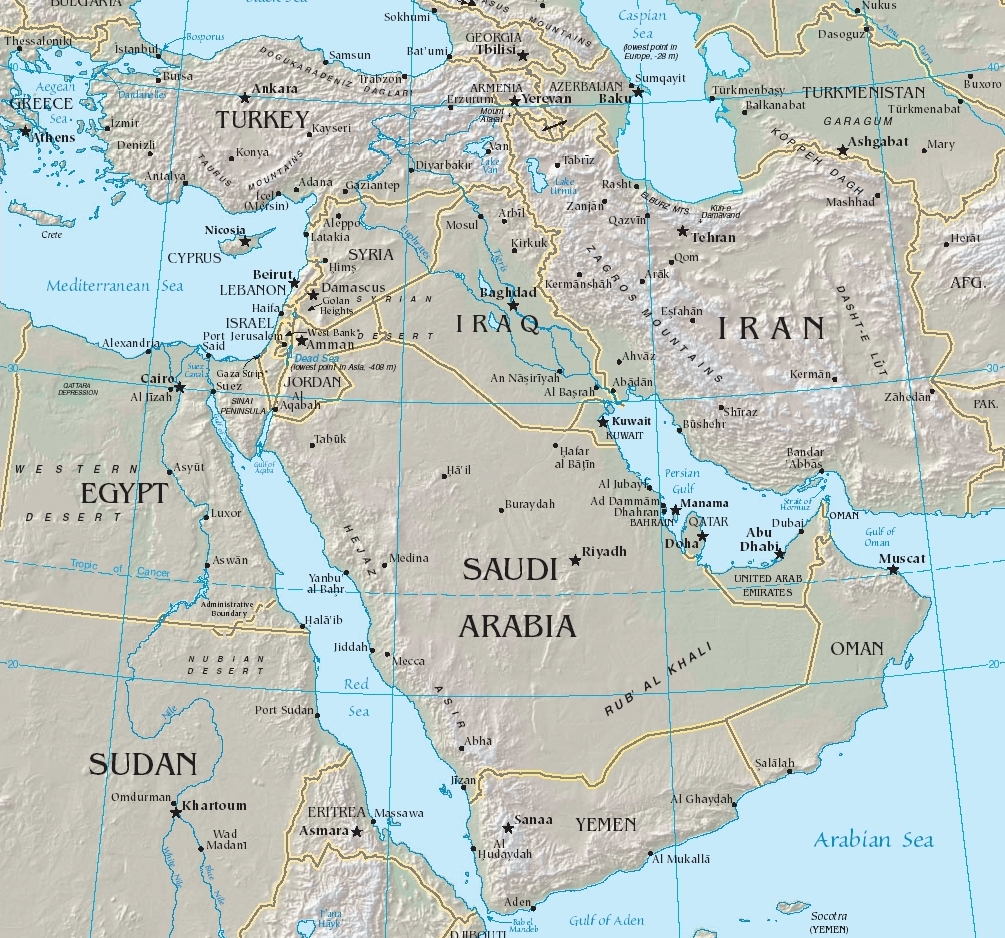For more than a thousand years the marsh Arabs of southern Iraq persisted in the Tigris-Euphrates delta. When we think of an Arab, the Bedouin of the desert often comes to mind. But the marsh Arabs of the Ma’dan tribe built their lives around the marsh with their hunting, water buffalo and agriculture. Their population reached the hundreds of thousands.
The above photo was taken before 1991. Saddam drained the marshes and displaced the inhabitants following the Shia uprising in southern Iraq after the first Gulf war. The marsh had been a refuge for those who opposed Saddam. Further, the marsh Arabs had long been known for their resistance to outside interference, and hence, they were obvious victims of Saddam’s need to regain control of Iraq.
The people of this area were chronicled by Wilfred Thesiger in his classic, The Marsh Arabs ,and by Gavin Maxwell in his poetic work A Reed Shaken by the Wind. The photo below was taken when we visited the marsh Arabs in the summer of 2003 after the Second Iraq war. The reed house shown here is typical of their dwellings.
The photo below shows the marsh filling again (2003), and the marsh Arabs began to return to their homeland, perhaps in the tens of thousands.
Our medical team traveled north from Kuwait City, over the border staying in Basra, and then up to Nasirriya where we worked, under military guard, with the people of the marsh. Infant malnutrition was terrible and unrecorded by authorities. Their toughness had not diminished, and they were desperate for medical care. There were no mosques, and the people were bereft of any remaining religious heritage. So disconsolate were the people that our clinics verged on open combat. When we lagged behind the pace they wanted, scuffles broke out, and on one occasion an AK-47 announced their frustration. Our vehicles were partially looted including all the outside mirrors. They were a tough, rough people, their anger enhanced by years of neglect, attacks from Saddam, destruction of their homeland, and ethnic bias from their fellow Iraqis.
Perhaps we helped a few. But we had to leave. I have not been able to return.
Our visit was thirteen years ago, and I hoped as the marsh filled, their conditions would improve. But now I understand the flow of the two great rivers has diminished, from excessive damming and reduced rain, and the salt is creeping up from the Shatt Al-Arab. The salt is a time bomb for the marsh Arabs.







January 14, 2020
Woh I like your posts, saved to bookmarks! .
February 13, 2020
I have read some good stuff here. Definitely price bookmarking for revisiting. I surprise how much effort you set to create any such magnificent informative site.
February 19, 2020
You have brought up a very good details , thanks for the post.
April 13, 2020
Hello.This article was extremely interesting, especially because I was investigating for thoughts on this matter last Saturday.
April 16, 2020
You have brought up a very excellent details, thanks for the post.